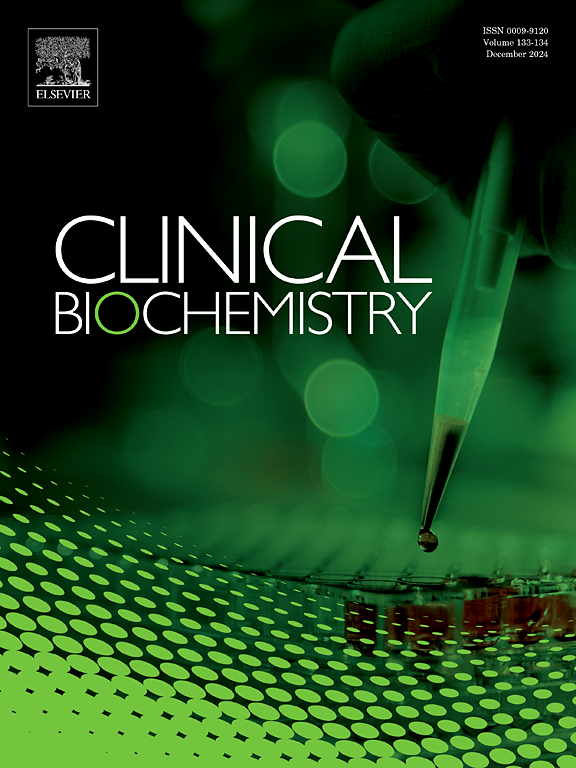LRG和NGAL是炎症性肠病的潜在诊断和疾病活动性生物标志物。
IF 2.1
3区 医学
Q2 MEDICAL LABORATORY TECHNOLOGY
引用次数: 0
摘要
背景:中性粒细胞明胶酶相关脂钙蛋白(NGAL)和血清富亮氨酸α-2糖蛋白(LRG)被报道为炎症性肠病(IBD)的潜在生物标志物,但其诊断效果的差异尚未报道。我们旨在探讨NGAL和LRG在IBD诊断和疾病评估中的临床价值。方法:选取100例IBD患者,其中克罗恩病(CD) 75例,溃疡性结肠炎25例,对照组100例。采用酶联免疫吸附法测定血清NGAL和LRG浓度。采用受试者工作特征(ROC)曲线分析评价其诊断效果。结果:IBD患者血清NGAL和LRG浓度显著高于健康对照组(P )结论:血清NGAL和LRG是IBD潜在的诊断和疾病活动性生物标志物,具有良好的临床应用价值。本文章由计算机程序翻译,如有差异,请以英文原文为准。
LRG and NGAL are potential diagnosis and disease activity biomarkers for inflammatory bowel disease
Background
Neutrophil gelatinase-associated lipocalin (NGAL) and serum leucine-rich α-2 glycoprotein (LRG) are reported as potential biomarkers in inflammatory bowel disease (IBD), but the difference in diagnostic efficacy has not been reported. We aimed to investigate the clinical value of NGAL and LRG in IBD diagnosis and disease assessment.
Methods
One hundred IBD patients, including 75 Crohn’s disease (CD) and 25 ulcerative colitis, and 100 healthy controls were enrolled. The serum NGAL and LRG concentrations were quantified by enzyme linked immunosorbent assay. Receiver operating characteristic (ROC) curve analysis was used to evaluate their diagnostic performance.
Results
The serum concentrations of NGAL and LRG were significantly higher in IBD patients than in healthy controls (P < 0.001). Serum NGAL is significantly correlated with LRG (r = 0.574, P < 0.001). Serum LRG showed a better capacity to identify IBD with an area under the ROC curve (AUC) of 0.90 (sensitivity 89 %, specificity 78 %), compared to NGAL with an AUC of 0.84 (sensitivity 85 %, specificity 71 %). Additionally, serum NGAL and LRG were highly correlated with disease activity in CD patients (r = 0.865 and 0.878, P < 0.001), and gradually increased with disease activity severity (P < 0.05).
Conclusion
Serum NGAL and LRG are potential diagnostic and disease activity biomarkers for IBD, which have good clinical application value.
求助全文
通过发布文献求助,成功后即可免费获取论文全文。
去求助
来源期刊

Clinical biochemistry
医学-医学实验技术
CiteScore
5.10
自引率
0.00%
发文量
151
审稿时长
25 days
期刊介绍:
Clinical Biochemistry publishes articles relating to clinical chemistry, molecular biology and genetics, therapeutic drug monitoring and toxicology, laboratory immunology and laboratory medicine in general, with the focus on analytical and clinical investigation of laboratory tests in humans used for diagnosis, prognosis, treatment and therapy, and monitoring of disease.
 求助内容:
求助内容: 应助结果提醒方式:
应助结果提醒方式:


